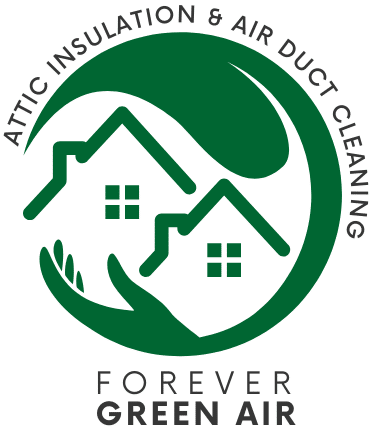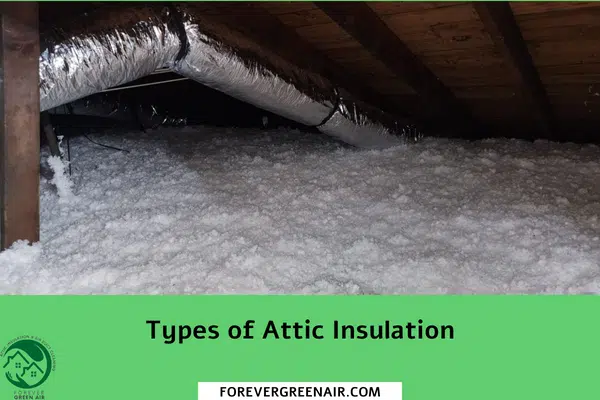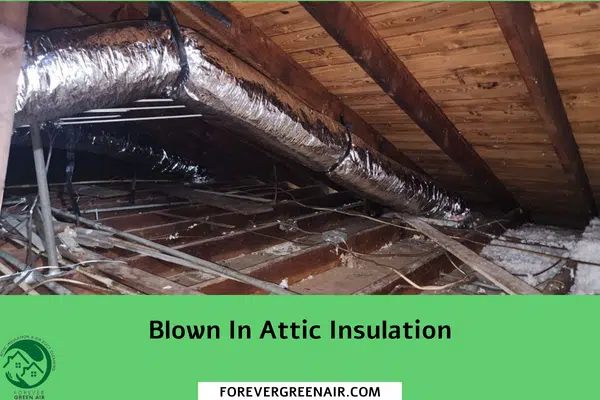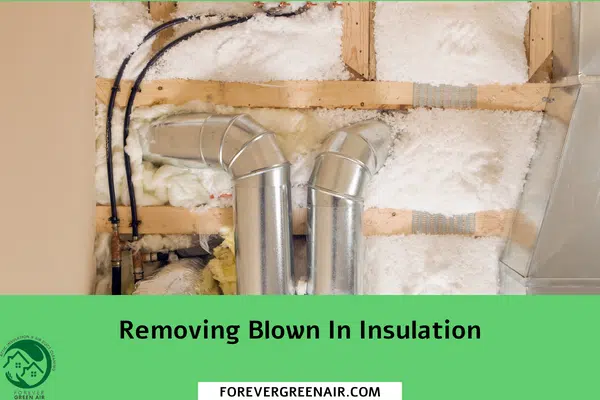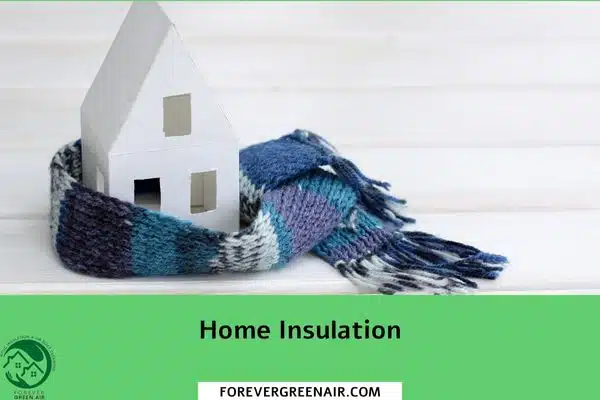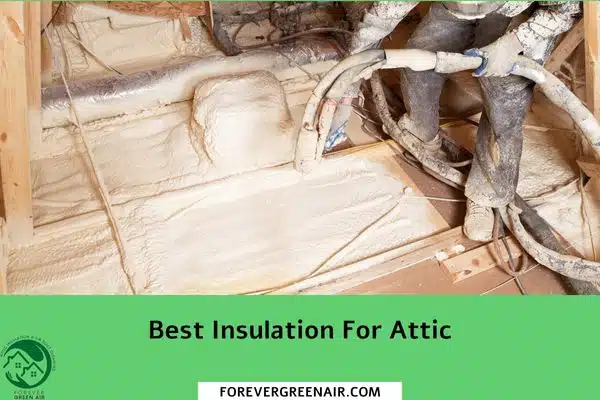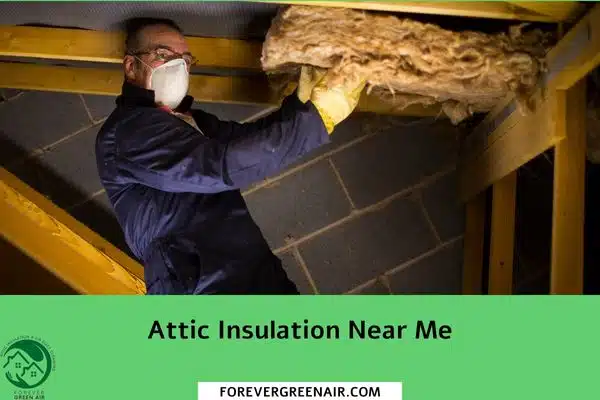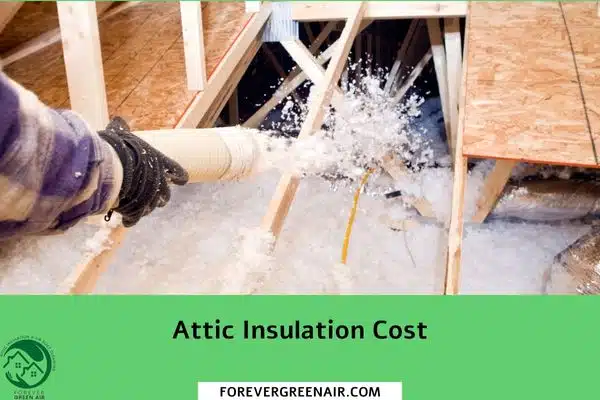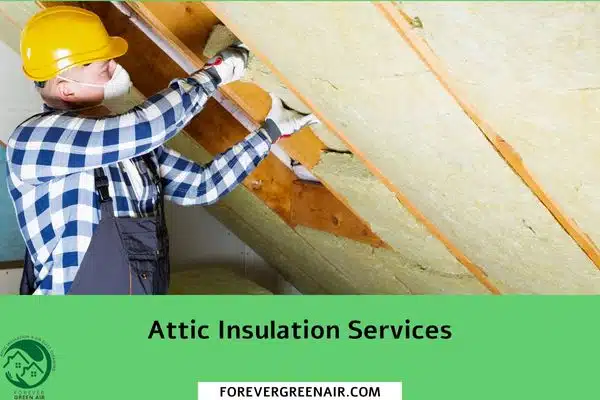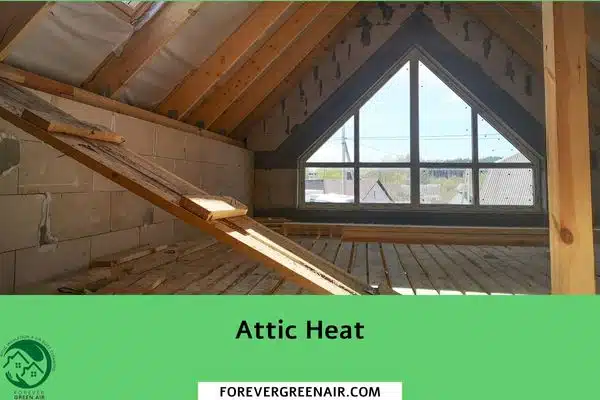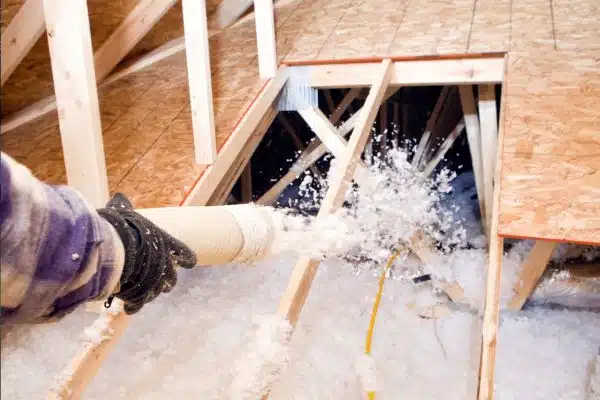Making sure your home is properly insulated can help reduce energy costs and improve the overall comfort of your living space.
One area that should not be overlooked when it comes to insulation is your attic, as a well-insulated attic can play an important role in regulating your home temperature efficiently.
In this blog post, we’ll explore how adding insulation to attic will maximize energy savings while still providing you with a comfortable environment all year round!
Contact Us
Benefits of Insulating Your Attic - Decrease Energy Bills and Improve Comfort
If you’re looking for a cost-effective way to reduce your monthly energy bills, consider adding insulation to your attic.
The attic is often one of the most neglected areas of a home, but it can play a significant role in keeping your living spaces comfortable.
Adding insulation to your attic can help prevent heat loss in the winter and heat gain in the summer, which can reduce the need for your heating and cooling systems to work overtime.
As a result, you’ll save money on energy bills and improve the overall comfort of your home.
So, if you’re tired of feeling the chill in the winter or experiencing unbearable heat during the summer, consider adding insulation to your attic.
It’s a small investment that can make a big difference!
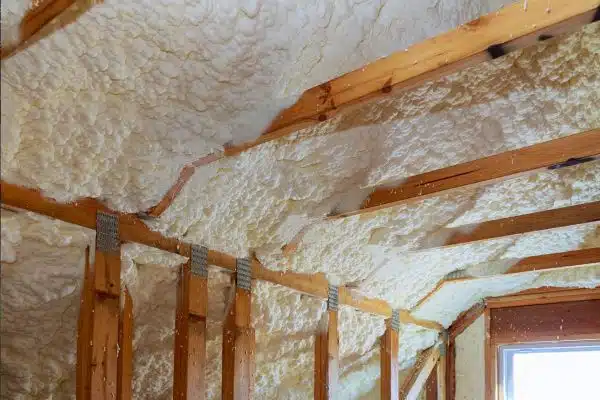
Factors to Consider Before Adding Insulation - Climate and Budget
Before adding insulation to your attic, there are a few key factors to consider.
First and foremost, your climate plays a big role in determining the type and amount of insulation you’ll need.
For example, those living in colder climates will require more insulation to keep their home warm during the winter months.
On the other hand, warmer climates may require less insulation to prevent overheating in the summer.
Additionally, budget is an important consideration when adding insulation.
While it’s important to invest in quality insulation, it’s also important to ensure it fits within your financial constraints.
Taking climate and budget into account will help you make an informed decision when it comes to adding insulation to your attic.
Best Types of Insulation for Different Regions - Fiberglass, Cotton, and Foam
When it comes to adding insulation to your attic, it’s important to consider what type of insulation is best suited for your region.
Fiberglass, cotton, and foam are all popular choices, but each has its own strengths and weaknesses.
In colder regions, for example, foam insulation may be the way to go because of its excellent insulating properties.
On the other hand, in warmer regions, cotton insulation may be a better choice because it’s less likely to trap moisture and cause mold.
Of course, there are many other factors to consider, such as cost, ease of installation, and the size of your attic.
Ultimately, it’s best to consult with a professional to determine the type of insulation that’s right for your specific needs.

Choosing the Right R-Value for Your Region - Gauge the Needed Level of Thermal Resistance
As the temperature starts to drop, you may be considering adding insulation to your attic to better regulate the temperature within your home.
It is essential to gauge the proper level of thermal resistance, or R-value, that your region requires.
The R-value measures how well insulation can resist heat flow, so choosing the right level is crucial to preventing heat loss and lowering your energy bills.
While some regions may require a minimum R-value of 30, others may require as high as 49.
It’s essential to consider these factors when selecting a level of insulation that will work best for your home.
By doing so, you can ensure that your home remains comfortable year-round while reducing your energy costs.
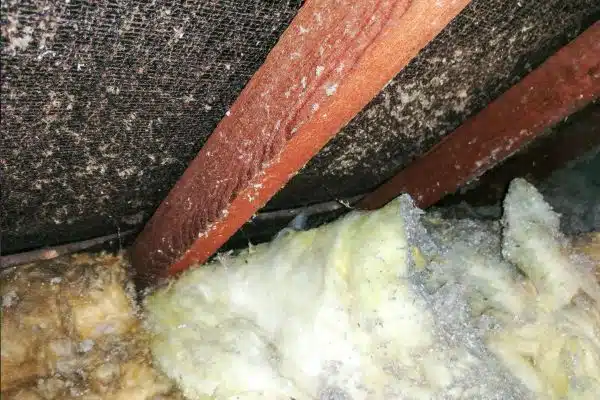
Installing Fiberglass Insulation - Roll Out Mats and Cut to Fit Around Pipes and Ductwork
Keeping your home energy efficient is important, but sometimes it can be challenging to know where to start.
One of the best places to begin is by adding insulation to your attic.
Installing fiberglass insulation is a popular and effective method for increasing energy efficiency, and roll out mats make the process easier than ever before.
By cutting the mats to fit around pipes and ductwork, you can seamlessly add insulation to your attic without worrying about gaps or air leaks.
This not only helps to reduce heating and cooling costs, but it also creates a more comfortable living space.
So why not consider installing fiberglass insulation with roll out mats?
It’s a simple way to invest in the long-term energy efficiency of your home.
Measuring for Proper Ventilation Installation - Avoid Moisture Buildup with Proper Ventilation
Proper ventilation is a key factor in ensuring a healthy home and avoiding moisture-related issues.
When installing ventilation systems, it is important to measure properly to ensure that the system is effective and efficient.
One step to consider is adding insulation to the attic, which can help to regulate the temperature and reduce the risk of moisture buildup.
By taking these steps, homeowners can ensure that their homes are well-ventilated and that they will not have to deal with the consequences of excess moisture, such as mold and dampness.
With proper measurement and installation, proper ventilation can help maintain a comfortable and healthy home environment.
Investing time and effort in insulating your attic is a great way to save money by reducing energy bills, as well as increase comfort and reduce condensation.
Consider factors such as climate and financial budget when selecting the type of insulation.
Fiberglass is the most common form of insulation used in attics due to its effectiveness in all climates; however, you may also want to consider using cotton or foam for regions with extreme temperatures.
Choosing the right R-value will ensure that your home has the necessary amount of thermal resistance needed for efficient temperature regulation while keeping energy costs low.
Installing fiberglass insulation requires unrolling the mats, cutting them to fit tightly around HVAC units, ducts, pipes and other areas.
To fully experience the benefits from attic insulation it’s important to follow manufacturer instructions closely for proper installation and measure the vents properly corresponding with your climate conditions after installing insulation to avoid moisture buildup in your attic.
Insulating your attic not only helps save you money but it’s an investment that will improve your providing better air quality indoors by maintaining a comfortable desired temperature year round!
What are the benefits of adding insulation to my attic?
Adding insulation to your attic is one of the best ways to create a more energy efficient, comfortable, and healthy home. Here are some of the benefits of adding insulation to your attic:
Increased Energy Efficiency – Attic insulation helps prevent heat escape during colder months and keep hot air out during warmer ones. This keeps heating and cooling costs lower as you don’t have to work as hard maintaining the desired temperature in your home.
Improved Comfort Level – When properly insulated, attics act as a thermal barrier which prevents cold drafts from coming into your living space below. Insulation also helps muffle noises from outside and any other upstairs traffic, creating a more peaceful atmosphere in your home overall.
Healthier Air Quality – Poorly ventilated attics can trap excess moisture or dust particles which could lead to health risks such as mold growth or allergies; however adding insulation helps give ventilation systems like ridge vents an extra boost so they can work at their full potential for better air circulation throughout the entire house!
4 Reduced Carbon Footprint – Finally, insulating your attic not only makes it more energy efficient but goes an extra step towards reducing carbon emissions due to decreased reliance on power-hungry HVAC systems running longer hours than necessary just trying maintain temperatures inside homes that are uninsulated (or insufficiently insulated). With improved thermal efficiency brought by added insulation you can say goodbye high electric bills in addition feeling good about helping reduce our collective carbon footprint!
In conclusion, investing in proper levels of attic insulation certainly has its rewards when it comes time for reaping the rewards of a healthy environment coupled with substantial cost savings over time!
What special tools or materials will I need to add insulation to my attic?
Adding insulation to your attic is an important step in making your home more energy efficient, and it’s relatively easy to do. To add insulation to your attic, you’ll need some basic tools and materials.
The first thing you will need is protective gear; safety glasses, dust masks, and work gloves are essential for any type of insulation project. You’ll also need a good-quality dust broom as well as utility knife or saw if necessary for cutting the batts or rolls of insulation into pieces that will fit into the space between joists in your attic. For ceilings that have metal panels rather than joists, you may want to invest in a tin snips.
In terms of materials used for adding insulation, you can choose from fiberglass batts or rolls of blanket-type installation with either paper facing attached (for protection against moisture) or kraft paper backing (for superior fire resistance).
Whichever type of material you pick make sure it has the correct R-Value rating to meet local building code requirements. You can also use other types such as wool blankets, cotton fiber mats/blankets, polystyrene foam board systems (unfaced), spray foam in cans like Great StuffTM Insulating Foam Sealant and expandable sprayed foam systems — but these are often better suited for larger projects due to their high cost relative to traditional batt/roll materials..
Also remember that it’s best practice not only use appropriate thermal barrier whenever installing loose fill cellulose fiber insulations but also secure them mechanically so they don’t fall out over time – this means attaching batting and sheets using special adhesive strips or fastening boards made from wood frames filled with wire mesh on top of the material being secured by screws during installation process itself!
This way no air drafts will infiltrate through gaps while providing extra stability when moving around attic space carrying heavy loads every now then too…
Will adding insulation to my attic help me save money on energy bills?
Absolutely! Adding insulation to your attic can save you money on energy bills as it helps regulate the temperature in your home and prevents heat from escaping. In fact, studies have estimated that adding insulation to an average attic can reduce energy costs by 15-20%.
There are several types of insulation materials you could choose for your attic, each with its own unique benefits. Fiberglass batts are one of the most common kinds used in attics, as they’re cost-effective and highly efficient at trapping air particles within their fibers.
Cellulose is another type that’s made from recycled paper products and provides great soundproofing qualities. Lastly, spray foam has become increasingly popular due to its ability to expand and fill spaces completely, providing ideal performance when it comes saving energy costs.
Ultimately, choosing the right kind of insulation will depend on what objectives you’re trying to achieve in terms of cost savings or noise reduction. Consider speaking to a certified contractor who specializes in insulating homes – they’ll be able to give you tailored advice based on your needs!
How can I know if my attic needs more insulation?
Knowing if your attic needs more insulation can be a tricky thing, and often requires some investigation to determine the most cost-effective solution. The first step is to assess what type of insulation is already in place in your attic.
Look around for any signs of existing insulation, such as batts or blown-in material placed between the joists. Then measure its thickness to determine if it meets the recommended minimum levels for your area. It’s important to note that current codes may require more than what was used previously.
The next step is to evaluate how efficient your existing insulation is in keeping warm air from escaping through ceilings and walls into your attic space during cold months and preventing heat from entering during hot months.
You can do this yourself by inspecting any visible gaps or cracks – even small ones – around windows, vents, piping, chimneys etc., feeling for drafts around these areas with an incense stick or lighter flame (never use open flames).
If you find cold spots near openings like these, additional caulking and sealing may be necessary before adding new insulation (even though adding new insulation will also help reduce drafts).
Finally you should conduct a thorough evaluation of all ventilation systems present in the attic under both summer and winter conditions: ensure that enough air supply enters while not allowing unconditioned outside air being pulled into the living space below via return ducts located in the attic space.
This could mean adding more soffit vents at eaves or ridge venting at ridges/peaks on roof tops depending on when they were installed last time – usually 15 years ago!
Overall, before making any decisions regarding further insulating an attic space it pays off to have a professional come by who specializes in energy audits so they can evaluate what measures need to be taken depending on where you live – as regional climates can vary significantly across different parts of country!
Are there any special considerations for my attic if it has an air conditioning unit?
Absolutely! If your attic has an air conditioning unit, there are a few things to consider that can help keep it running efficiently and effectively.
First, proper ventilation is essential for keeping your air conditioner from short-cycling or overheating. This means having a good intake of outside air coming in through the attic, with an adequate exhaust vent leading out of the space.
Without this balance of airflow, warm outside air will come inside the house and cause indoor temperatures to rise, making the A/C work harder than necessary and using up more energy.
Second, make sure you have enough insulation in your attic to prevent cold air from escaping during the summer months. Make sure that there is minimum R-30 value insulation between the living space and your attic; if not then adding more insulation can help reduce energy costs while also maintaining comfortable temperatures year round.
Additionally consider getting a radiant barrier installed on top of existing insulation as this will further reduce any temperature fluctuations due to summer heat or winter chill entering into your home through uninsulated areas of attics and flooring voids.
Finally, it’s important to check for leaks regularly as these can let coolant escape which depletes its efficiency over time—keeping parts like hoses and ductwork free from debris also helps ensure peak performance all year round!
Will adding insulation to my attic help reduce noise?
Absolutely! Insulating your attic is a great way to reduce the amount of noise that comes into your home from outside sources. What insulation will do is provide a sound barrier between the outdoor area and indoors, which can dramatically reduce the amount of sound waves that enter your home.
This means that you’ll experience less loud noises coming from traffic, people talking, animals barking, and more.
The type of insulation you choose for your attic will depend on what kind of noise reduction effect you’re trying to achieve. Generally speaking, there are two types of insulation:
fiberglass batt and loose-fill or blown-in cellulose or fiberglass materials.
Fiberglass batts provide good resistance to airborne noises such as voices and music playing but less so for impact sounds like footsteps or rain hitting the roof directly above it; they also trap air well enough to prevent convective heat flow in summer months (by blocking hot air circulation) when installed correctly with an adequate vapor retarder system in place.
Loose-fill materials such as cellulose or fiberglass offer better resistance against impact sounds while still being able to trap air efficiently – however these may need additional covering if used in attics since their ability to fill any inherent gaps or cracks may mean greater amounts of dust entering through them eventually if left uncovered over time.
In addition, adding acoustic tiles (like foam panels) in various parts in the attic near vents/dormers/other openings can be very helpful too; this will allow even smaller spaces between exterior walls where noise could get through before getting trapped by solid surface barriers provided by insulated material – so it’s always worth looking into acoustic tiles as well when considering ways to improve sound reduction inside one’s home!
